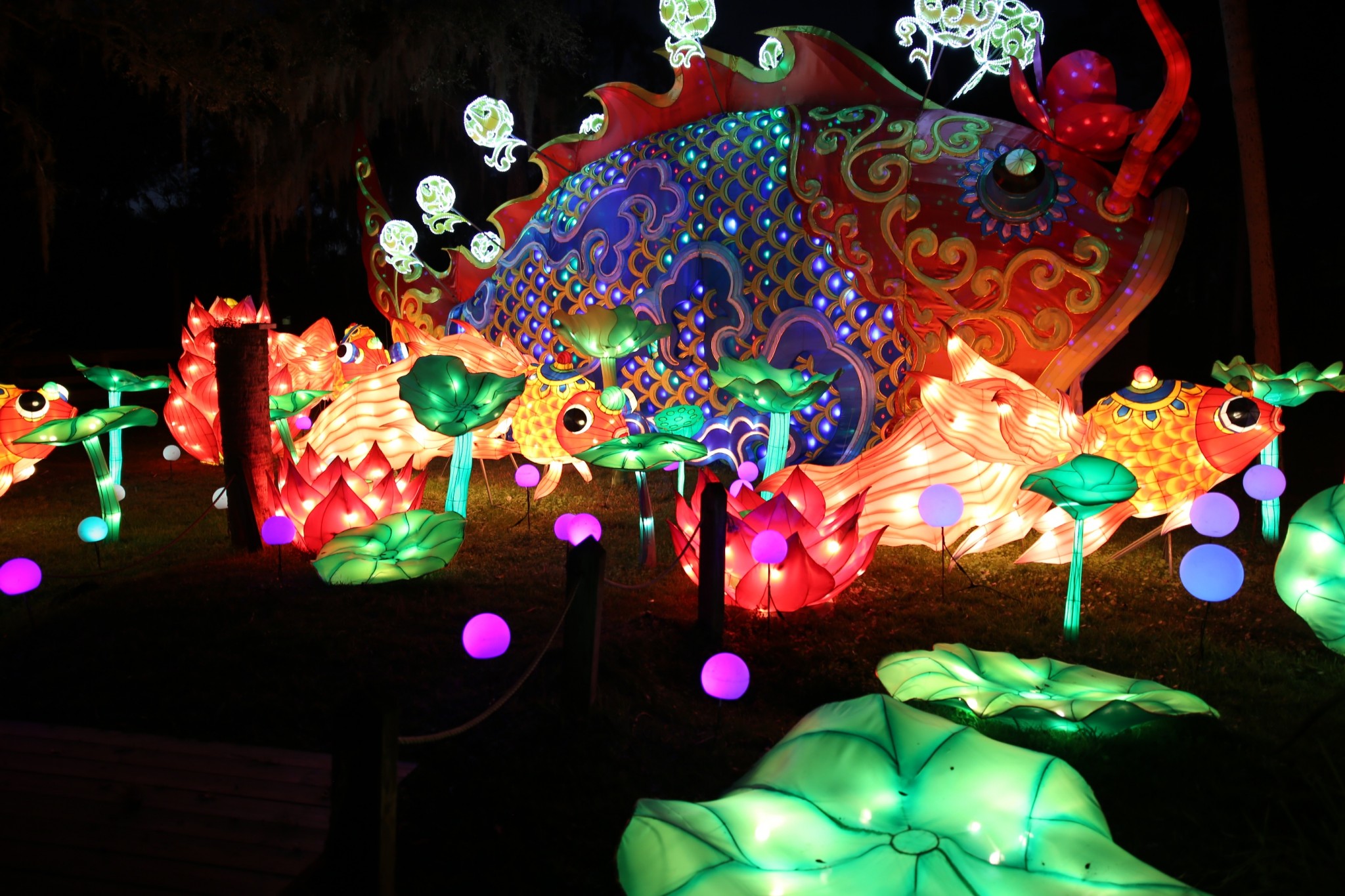

The zoo will offer a limited number of drive-thru opportunities on Wednesday nights for anyone who wants to experience the festival from their personal vehicles. Visitors will also see a variety of animals, such as endangered species and mystical dragons, reflected in the illuminated displays. “Thanks to the tremendous support of our partners we’re able to elevate the festival every year and we can’t wait to share our biggest and most complex displays yet.” “Asian Lantern Festival has become a summer staple in Cleveland with guests returning year after year to experience the Zoo in a whole new way,” said Kelly Manderfield, Cleveland Metroparks Chief Marketing Officer in a news release. Throughout the festival, visitors who work up an appetite while exploring the zoo can taste a variety of culturally-inspired cuisines from some of the best restaurants Cleveland has to offer at the MetroHealth Asian Food Market. This year, there will be live performances every hour on Fifth Third Bank Stage. In its fifth year, this year’s event will include some of the largest displays yet, including a 100-foot-long, four-story-tall palace, sprawling Chinese gardens along Waterfowl Lake and a half-dozen giant walk-through lanterns that will surround nests with colorful flowers.Įach year, over 150,000 visitors come to the zoo after dark to experience the festival, according to the news release. The Bung Fai festival is not only found in Isan or Northeasthern Thailand and North Thailand and Laos, but also in Amphoe Sukhirin, Narathiwat.CLEVELAND - The Asian Lantern Festival, the popular after-hours event at the Cleveland Metroparks Zoo, returns this summer with large-scale illuminated lantern displays, live acrobatic performances, and culturally inspired cuisine beginning Wednesday, July 6 to Aug.
Asian lantern festival full#
The festival in Thailand also includes special programs and specific local patterns like Bung Fai (Parade dance) and a Beautiful Bung Fai float such as Yasothon the third weekend of May, and continues Suwannaphum District, Roi Et on the first weekend of June, Phanom Phrai District Roi Et during the full moon of the seventh month in Lunar year's calendar each year. Local participants and sponsors use the occasion to enhance their social prestige, as is customary in traditional Buddhist folk festivals throughout Southeast Asia. Celebrations typically include preliminary music and dance performances, competitive processions of floats, dancers and musicians on the second day, and culminating on the third day in competitive firings of home-made rockets. The Rocket Festival (Boun Bang Fai) is a merit-making ceremony traditionally practiced by ethnic Lao people near the beginning of the wet season in numerous villages and municipalities, in the regions of Northeastern Thailand and Laos. Whatever the legends you may read about, its roots always link to the ancient China.

The town was spared, and in gratitude the people continued to commemorate the event annually by carrying colorful lanterns throughout the town. The emperor, fooled by all the light, assumed the town was already engulfed in flames. He planned to destroy the town with fire, but he was thwarted by a fairy who advised the people to light lanterns across the town on the appointed day of destruction. During the Han Dynasty, the festival was connected to Ti Yin, the deity of the North Star.Īnother legend concerning the festival’s origin tells the tale of the Jade Emperor (You Di), who became angered at a town for killing his beautiful crane.

Another likely origin is the celebration of "the declining darkness of winter" and community's ability to "move about at night with human-made light," namely, lanterns. As a result, Emperor Ming ordered all households, temples and the imperial palace to light lanterns on that evening.įrom there it developed into a folk custom. However, its roots trace back more than 2000 years ago and is popularly linked to the reign of Emperor Ming of Han at the time when Buddhism was growing in China.Įmperor Ming was an advocate of Buddhism and noticed Buddhist monks would light lanterns in temples on the fifteenth day of the first lunar month. There are several beliefs about the origin of the Lantern Festival.


 0 kommentar(er)
0 kommentar(er)
